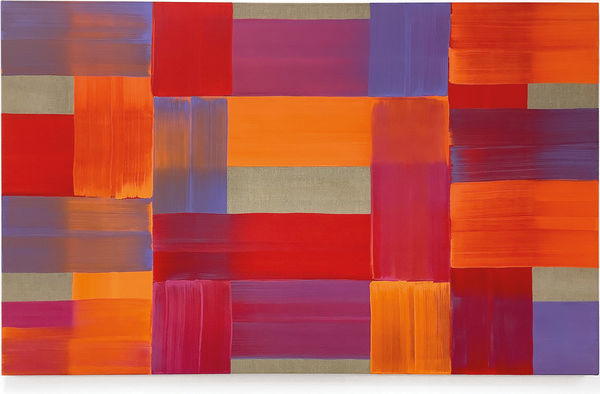
RUPERT EDER - "... UND DIE HÄNDE VOLLER STUNDEN ..."
Solo show
Opening on Friday, 27. September 2024, from 6 pm
7 pm introduction. The artists will be present.
Exhibition duration til 19. October 2024
Shortened opening times during the art fair Munich Highlights:
Friday, October 11th: 2:00 p.m. - 5:00 p.m
Saturday, October 12th: 12:00 p.m. - 4:00 p.m
Tuesday October 15th: closed
Wednesday - Friday, October 16th - 18th: 2:00 p.m. - 6:00 p.m
Saturday, October 19th: 12:00 p.m. - 4:00 p.m
Evening event at the end of the exhibition on Tuesday, October 22nd, 6:00 - 9:00 p.m
Following the tradition of modernist non-objective painting, Rupert Eder's works are created without a theoretical superstructure, without any model from real life, as pure work and progress with painting, in which painterly interests are mixed with the experience of nature and light.
The production of his paint material is very time-consuming, as it is his own mixtures of a multitude of pigments and various admixtures of metal powder, mother-of-pearl, soot and chalks. This forms that body of colours which, renouncing any figurative representation and narration, appears as colour material in fullest intensity and saturation. The knowledge of the history of painting, of the mixing of colours, their effects and meanings, forms the foundation and a historically far-reaching resonance space for Eder's work. But his works also stand in relation to more recent art, especially 20th century colourfield painting, which he takes up and continues in his own way.
Many of his paintings are based on a clear, almost grid-like pictorial structure, created from combinations of vertical and horizontal colour bands. While these paintings tend to follow a formal rigour, another group of works shows a playful handling of forms by taking the pictorial space for itself in movement, thus creating a network of lines.
The brushstroke is always visible on the surface of the painting. By superimposing several layers of paint, a rich, translucent colourfulness emerges, iridescent in its nuances, and the surface takes on a haptic quality.
Eder continues his artistic development with impressive consistency and constant expansion, so that over the years a richly branching cosmos of works has emerged. There is as little standstill in his work as in his works themselves, and so liveliness, dynamism and colourfulness make viewing the pictures a sensual event.
He was born in Bad Aibling in 1968, lives and works in Dießen am Ammersee. From 1991 to 1995 he studied at the Jesuit College of Philosophy in Munich.